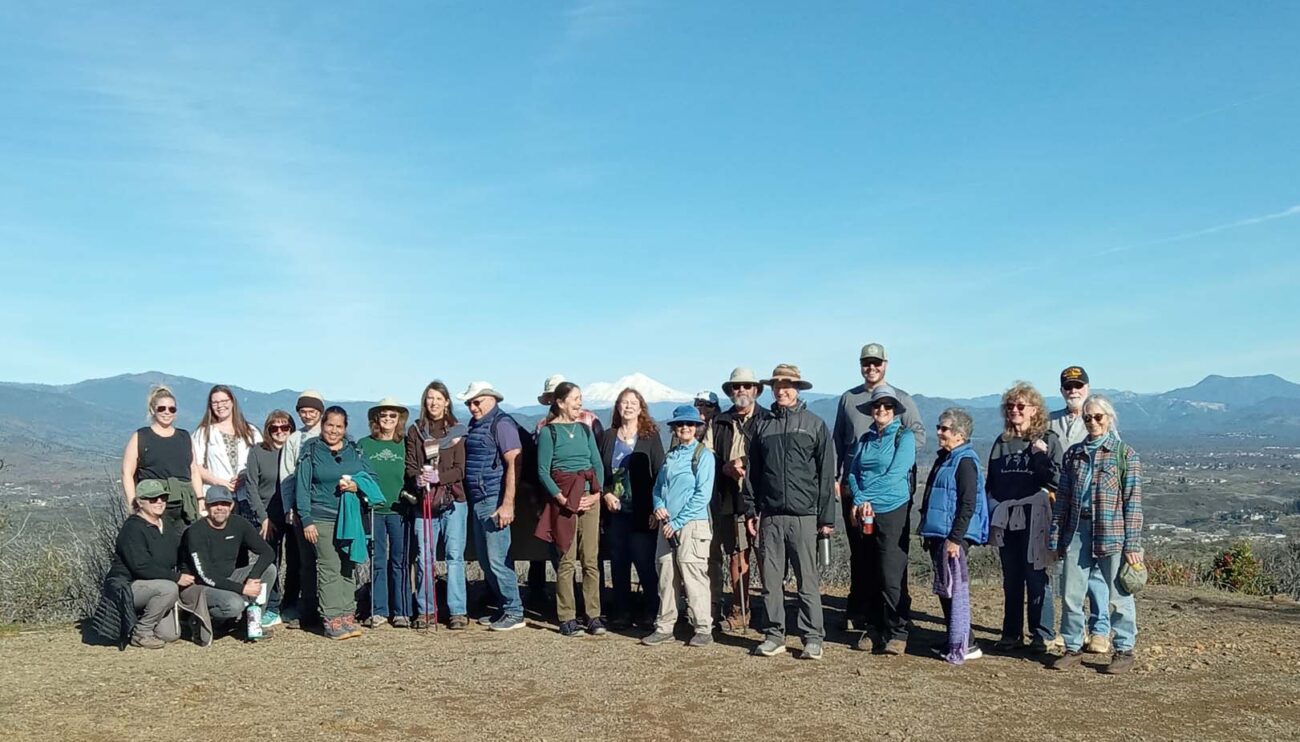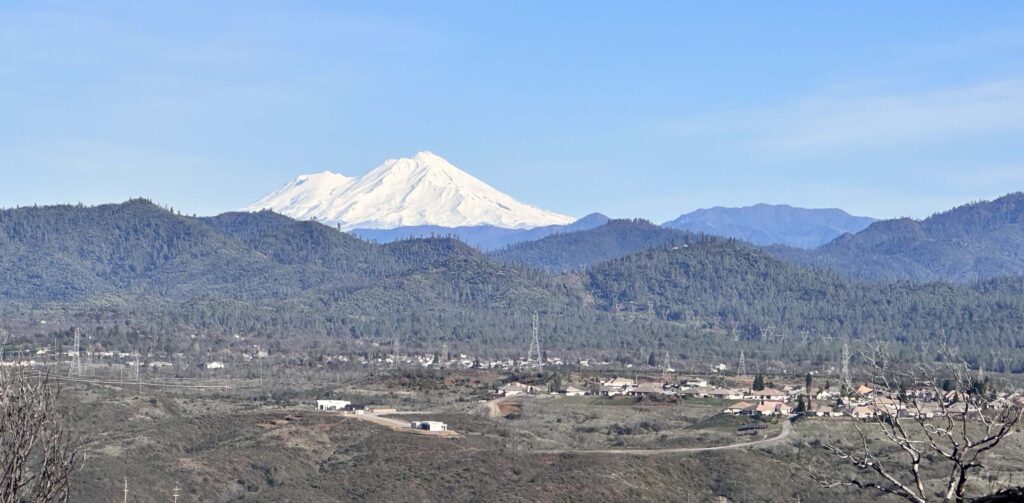
We had a great turnout for our annual joint Shasta Chapter CNPS–Shasta Environmental Alliance (SEA) field trip up the Westside Trail to the “Top of the World,” the highest hill in the trail complex. We had around 28 people on the field trip, which made it difficult for everyone to hear all of the plant identifications, but a lot of new friendships were made.
Everyone received a list of plant species from before the Carr Fire; several species have almost disappeared from areas of high-intensity burns, including gray pines and ponderosa pines. Although few knobcone pines grew in the area prior to the Carr Fire, numerous knobcone pine seedlings have sprouted and are growing quite fast. One new plant since the fire is stinkwort, a prolific invasive plant in California that was not seen on these trails prior to the Carr Fire (see David’s article, Stinkwort, Dittrichia graveolens). One stinkwort plant on the trail looked dead and most of the flowers had already gone to seed but, surprisingly, there were new flowers on the plant almost ready to open. SEA plans to host a volunteer work day next fall to remove and bag all the stinkwort plants we can find.
We took a little under three hours to walk the four miles, but we identified plants and features of the surrounding landscape while socializing on the way up. Normally, this is a hike that a person in decent shape can make in under 90 minutes.
We had many members of the SEA alliance on the field trip: Amy Henderson, President of Shasta Chapter CNPS; Sandy Harrison, President of Trails and Bikeways Council; Lisa Ross & Ray Pfister, Horsetown–Clear Creek Preserve Board members; MaryAnn McCrary, Co-chair of North State Climate Action; as well as members of Sierra Club and Shasta Birding Society (formerly Wintu Audubon Society).
~David Ledger

